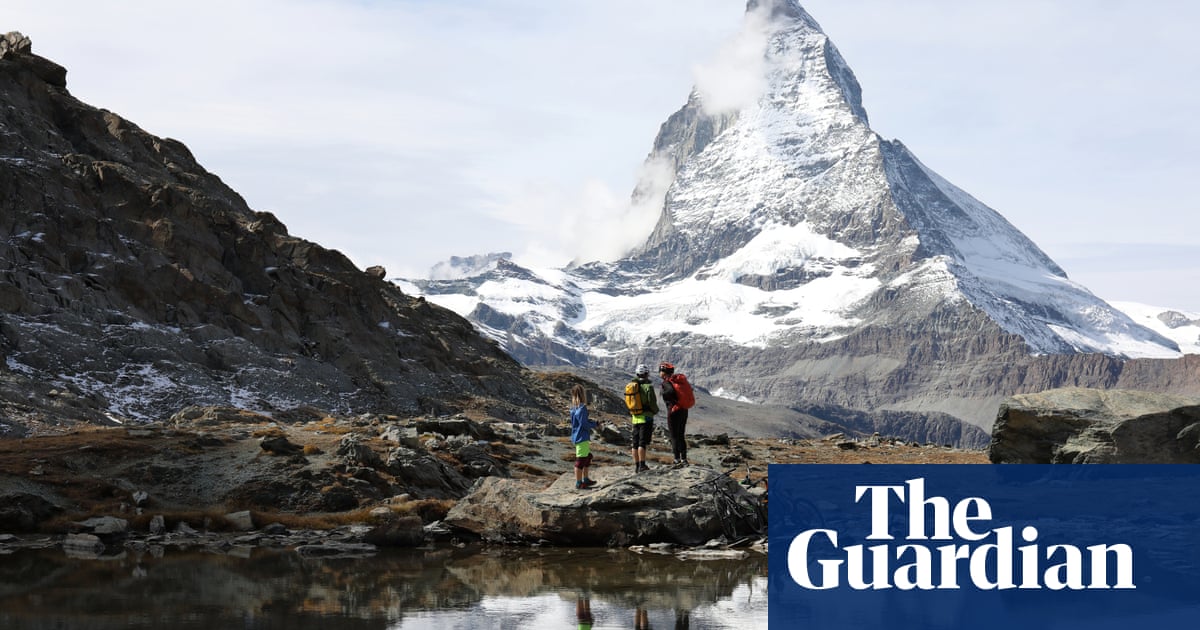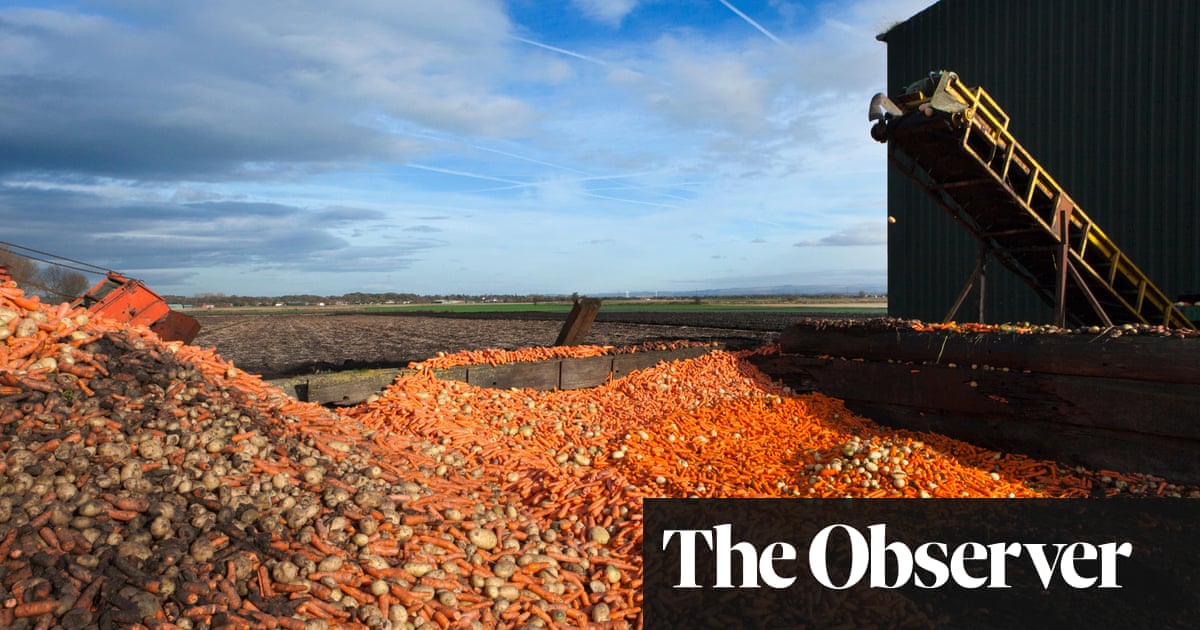This winding LA highway is notoriously treacherous. Extreme weather is making it worse | Los Angeles

Wildfires. Snowstorms. Falling boulders. DC Williams has long given up on predicting what the day will bring on Interstate 5 near Tejon Pass, an eight-lane stretch of highway that winds through the steep mountains north of Los Angeles.
Williams has been an officer with the California Highway Patrol and worked in this area for 11 years. On a chilly day this spring, he wore a thick black jacket even as he sat inside his Ford Explorer on a bridge overlooking the highway.
Below us lay one of the most crucial roads in the state. Traversed by more than 80,000 vehicles every day, from recreational motorists to trucks hauling heavy goods, this 40-mile stretch of Interstate 5, for more than half a century, has been the fastest route linking the bustling metropolis to the flat expanses of the Central valley, the state’s agricultural hub. Californians call this place “the Grapevine”.
For most motorists, the handful of gas stations, antique shops and an old army outpost that dot the area are something to get past – a literal mountain to be climbed – on their way to more populated parts of the Golden state.
But for those willing to see it, the Grapevine offers something else: a window onto the effects of extreme weather as a changing climate brings more storms, more flames, more landslides and more flooding.
The impacts on the highway are inescapable and far-reaching. The thoroughfare is regularly shut down due to snow or ice. Historic rains have led to landslides and wiped out portions of the road while in the summer, wildfires can be seen from passing vehicles. The closures, however brief, are highly disruptive – shifting tens of thousands of travelers east and west and creating severe traffic jams and grueling hours-long delays.
The intensifying weather has made working here a daily challenge, with no sense of what the seasons could bring, Williams explained. As he spoke, snow fell over the highway, on a particularly cold day in April. Moments later, he’d step outside for an interview with a local news station about the conditions.
“The weather is unpredictable. What’s going to happen up here is unpredictable,” Williams told me.
Getting to southern California from Sacramento and San Francisco, or vice versa, almost always means going over the Grapevine. As a northern Californian who spent three years living in Los Angeles and who frequently traveled the Grapevine, its role as a portal for two disparate regions of the state has long occupied my mind.
If you’re heading south, toward Los Angeles, the Grapevine emerges from the San Joaquin Valley like a sudden ladder into the sky. After leaving behind the orchards, cattle feed lots and dusty fields, the road climbs steeply up, as high as about 4,100ft. It winds through the mountains, usually covered in golden brown during the warmer months, and past the pines on the eastern edge of the Los Padres national forest.
I’ve driven on the road dozens of times and have found it equal parts captivating and terrifying, depending on the weather. In the winter, rain can fall in thick sheets, making it impossible to see the cars speeding past, while the spring offers perfect balmy mornings and yellow, orange and purple wildflowers that drape the green hillsides for miles.
This part of the mountains has been used as a travel route for hundreds of years. The community of Gorman, south of Tejon Pass, has been described by local historian Bonnie Kane as “one of the oldest continuously used trail and roadside rest stops in California”. Indigenous people traveling on an ancient trail system stopped in the settlement when it was a Tataviam tribe village, according to Kane, and the Spanish used the same trail.
In the early 20th century, California built the first paved highway from Los Angeles to the Central valley, known as the Ridge Route, over the top of the mountains. With a speed limit of 15mph, the journey from Los Angeles to Bakersfield, a distance of over 100 miles, took 12 hours. The road was precarious, notes Ridge Route historian Harrison Irving Scott, winding past hundreds of curves – including a particularly harrowing bend called “Deadman’s curve”.
Drivers, often due to speed or brake failures, would sometimes plummet off the roadside into the canyon below, referred to as “the graveyard”, Scott noted in his book on the route.
“Once you got on the Ridge Route, there was no place to get off,” Scott said. “Because of all the blind curves, they had plenty of head-on collisions. They would turn the wheel sharply and go down the cliff.”
Interstate 5, a nearly 1,400-mile (2,253km) highway that runs from Mexico to Canada and cuts through the middle of California like a scalpel, eventually replaced the old highway. While far safer than the Ridge Route, its steep winding curves, endless traffic and inclement weather have brought the highway its fair share of danger. In January, as fog covered the highway, two people died in a large pileup with dozens of vehicles. A few days later, the area was under a winter storm warning for snow and wind gusts of up to 80mph that the National Weather Service warned would lead to “very hazardous travel”.
In warmer months, the area is prone to wildfires – this summer, the Post fire, which started just off the highway, scorched more than 15,000 acres (6,070 hectares).
Then, there is the ever-present threat of earthquakes. The highway crosses over the intersection of the San Andreas and Garlock fault lines. After a 5.2-magnitude quake near Bakersfield shook the region in August, sending a large boulder off the mountainside and into the road, officials closed several lanes of the highway.
In 2023, California was hit by torrential winter storms that killed at least 22 people. The immense rainfall damaged the highway, causing mud to flow into the roadway and leading to erosion that wiped away a portion of the road’s shoulder.
The mountains are like a layer cake, but instead of frosting, it’s clay, said Scott, a retired engineer who has spent decades studying the Ridge Route: “There’s so many layers of dirt, clay, dirt, clay, and when it rains the clay becomes slippery and the road slides.”
To better understand the impacts of extreme weather on the highway, I tagged along with Williams to see things first-hand.
Los Angeles is defined by its perfectly moderate weather, with hundreds of days of sunshine and mild winters. But in early April, as I drove an hour north out of the city to meet Williams, the temperature dropped 30F. Over the afternoon in this rugged part of California, snow dusted the road and vehicles crawled through the mountains.
Williams and I met inside the CHP office in Lebec, which features a large black-and-white photo of old cars strewn across a snow-covered road after a major storm on the highway, along with a file for Operation Snowflake (the official name for when the CHP shuts down the road).
We drove through the mountain communities off the highway, where outsiders sometimes come to play in the snow, and then back on to the interstate, cars slowing as Williams passed.
Speed is a constant problem, even in difficult conditions and with escorts, Williams said, as we headed north on the highway, among the passenger vehicles and the Amazon trucks and semis carrying commercial goods across the state.
Williams pointed up at the mountains. On this Friday afternoon, they were a rich green. But in a few months, the hillsides, dotted with dirt paths and massive transmission lines, would dry out. “All this was on fire last year,” he said. “And see, it comes back, it burns, comes back, and it could burn again.”
Those fires can ultimately increase the risk for slides, Michael Comeaux of CalTrans points out, as flames destroy vegetation leading to greater saturation of burned slopes and a looser, less stable surface.
Eroding hillsides in the area are sending an increasing number of boulders tumbling down the mountain and into the roadway. Earlier in the spring, a massive rock hit the side of a patrol car.
As extreme weather increases across the world amid the climate crisis, conditions on the Grapevine are likely to intensify. Last year, snow and ice prompted the highway patrol to close the road completely at least four times.
That’s created logistical and cost headaches for CalTrans, the state agency responsible for managing California highways, which regularly works in the region to restore burned areas along the highway, including by hydroseeding, repairing the road and mitigating some of the sinking, Comeaux said. The agency spent $14m on an emergency project last year to build a retaining wall and rebuild a slope after heavy rain eroded part of the highway.
When I got into my car to head back to Los Angeles, the snow began to pick up, forcing traffic to slow. Williams had said earlier in the day he didn’t foresee having to close the road, despite the flurries, but that that could change anytime.
Eight hours after our drive, the early spring snowstorm would prompt officials to shut down the road and officers to escort thousands of vehicles up the mountain.
“We’ve got our work cut out for us up here,” Williams said.
Source link




